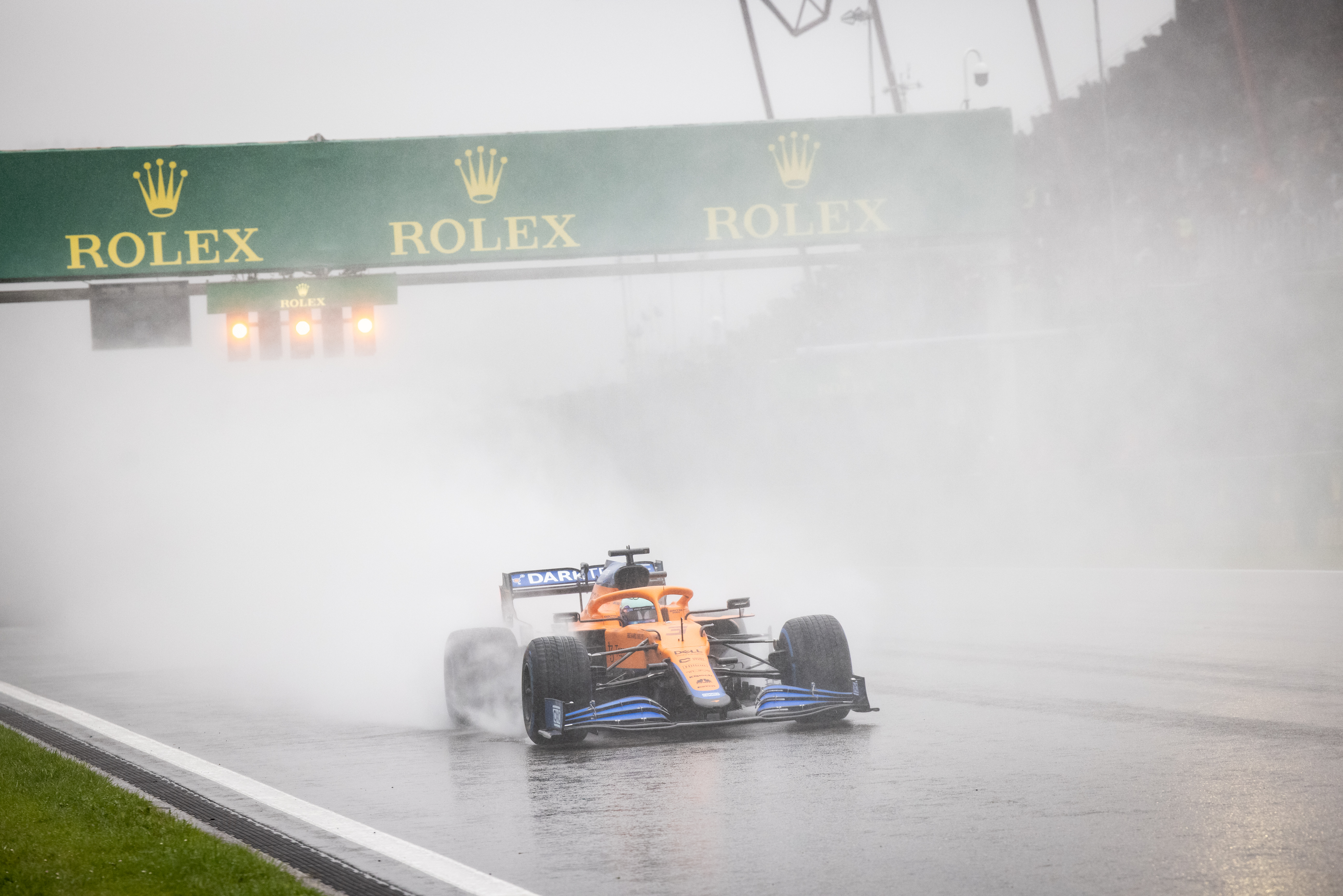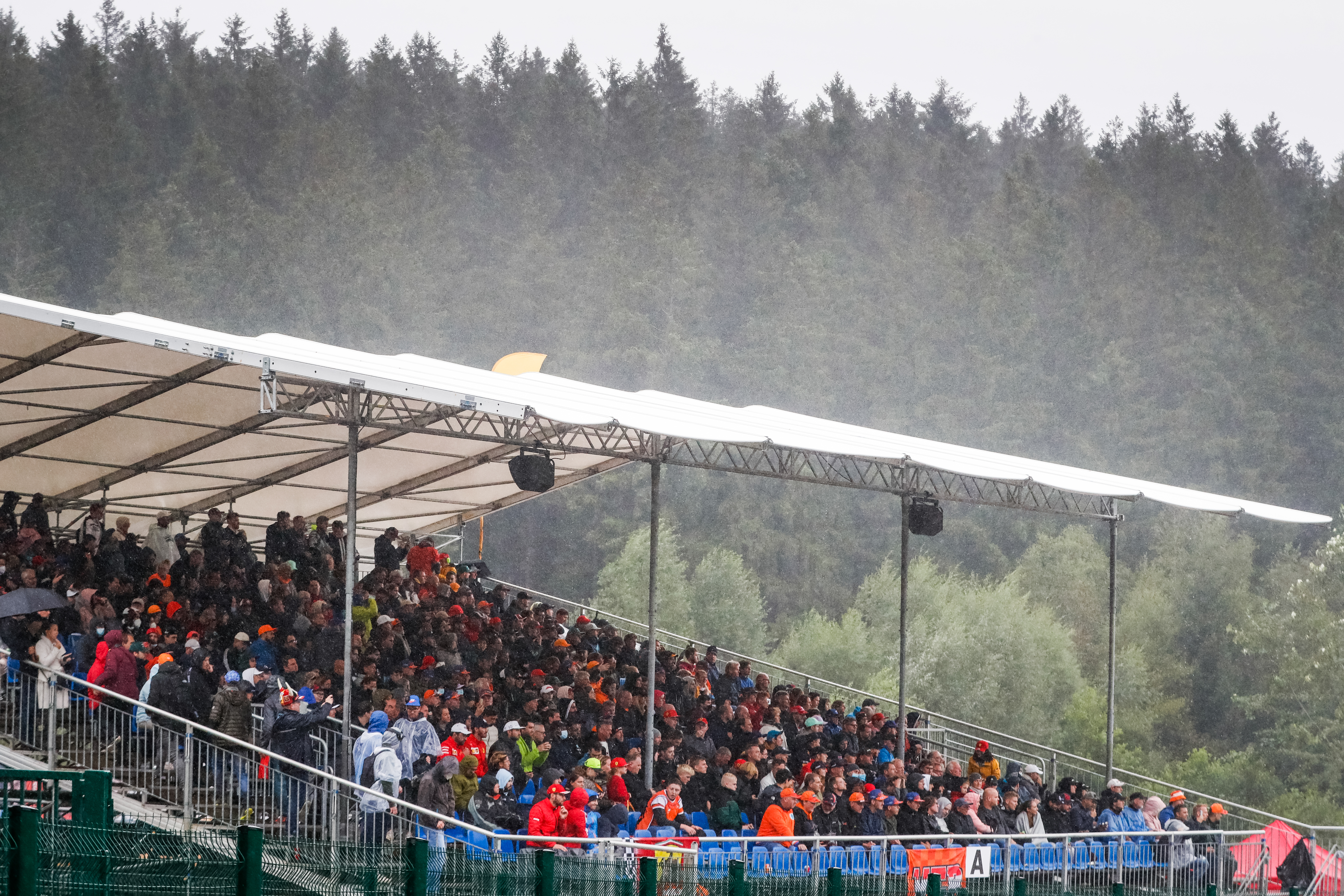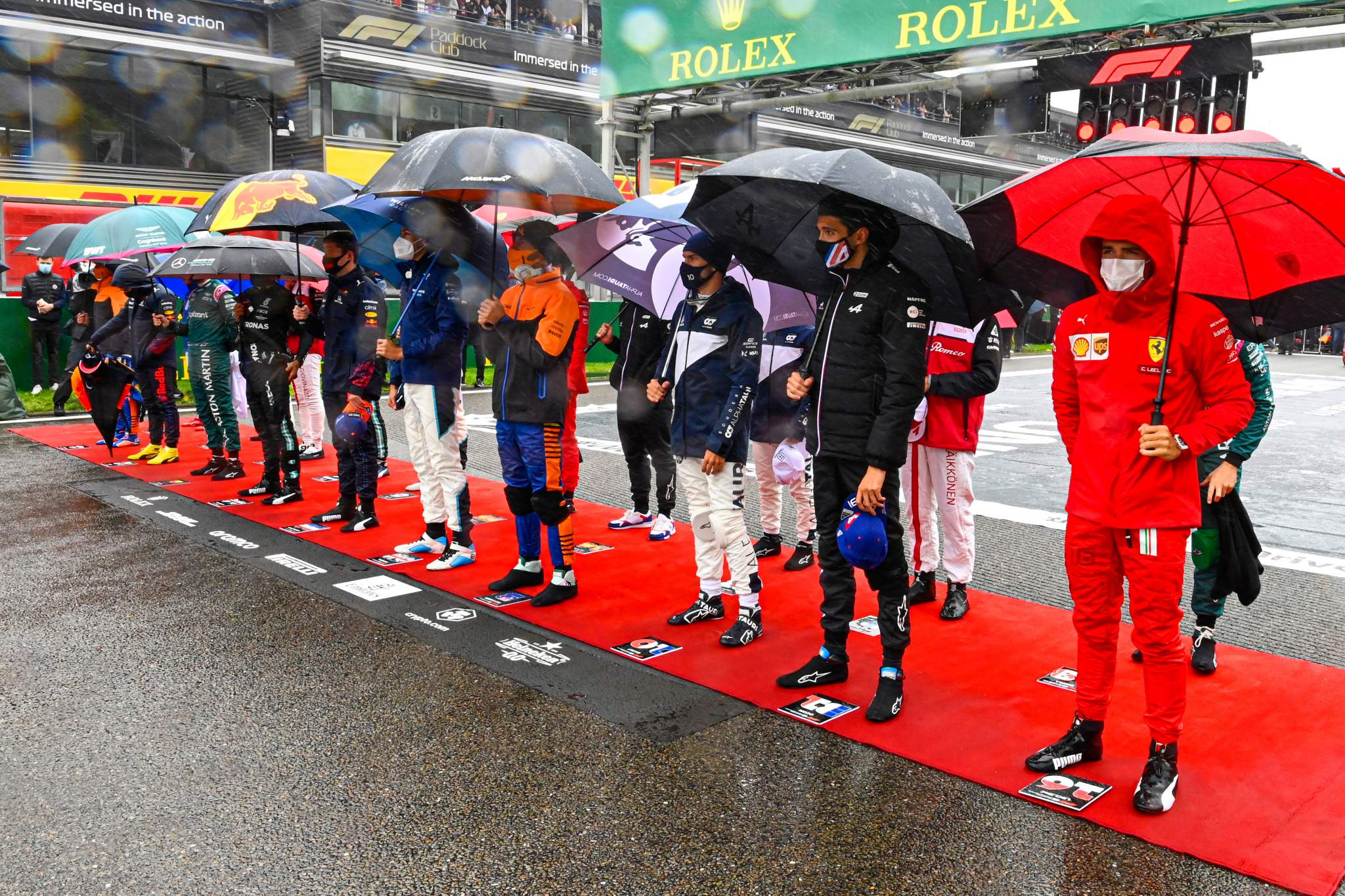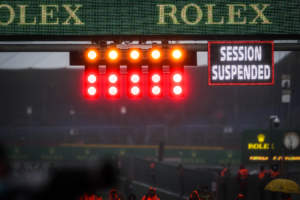Up Next

The Belgian Grand Prix showed how far Formula 1 has come in one way, and how far it still has to go in others – in particular in the way the fans are treated.
The positive is that driver safety, and for that matter the safety of trackside workers, is paramount. While this is nothing new, it’s a reminder that there was a time in F1 when this was not taken seriously.
There’s often a temptation to declare the drivers ‘gladiators’ who should be able to cope with any conditions. But with modern F1 cars, in particular, there is a point where it’s nothing to do with skill and purely about luck, as Daniel Ricciardo explained after the race.
“It’s simple physics that the car will just not stick, it won’t stay on the road,” said Ricciardo. “And that’s with 100% visibility let alone with literally 5%.
“It gets to a threshold where it’s no longer about skill, it’s about the car will not stick to the track.”

F1 cannot be blamed for the conditions at Spa and although there is room for improvement in terms of how such situations are dealt with in the future, the fundamental decision not to subject the drivers to a safety lottery was the correct one. Once beyond the threshold where it’s down to luck, not skill, F1’s hands are tied.
Where F1 really let itself down was in its treatment of the fans at the track on the day
There’s also no doubt that F1 would have run a race if it was safe to do so, even on the second attempt given there was a possible break in the weather according to forecasts.
However, when that second attempt was scheduled it was done so with the clear strategy that if it was not possible to throw the green flag because the conditions didn’t improve that it would simply create what might be called the ‘minimum viable race’.
That was the brief run under the safety car that constituted a grand prix unworthy of the name that we witnessed on Sunday.
But where F1 really let itself down was in its treatment of the fans at the track on the day. That the spectators were stuck in the cold throughout the afternoon was a consequence of circumstances and nobody is going to enjoy that experience – let alone having shelled out huge amounts of money for the privilege. But based on feedback and social media comments, F1 managed to make them feel even worse.
And the fan reaction was negative. Among those who messaged The Race’s Scott Mitchell on Twitter on Sunday were “I don’t think I will ever make that commitment to go to a race again”, “it felt like a smack in the face” and “my newfound passion could not have been trampled on more spectacularly”.
While F1 is now rightly looking into the possibility of some form of recompense, the fact nothing more than the vaguest lip service was paid on the day was alarming.
F1 is determined to recruit new fans and has worked hard to drive engagement with existing ones. Sadly, on race day at Spa, it was shown that the engagement is only on its terms. F1 wants to present the sanitised ‘Drive to Survive’ version of F1 to the masses without challenge or accountability to those who pour their heart and soul into following it. The reality of that was laid bare at Spa.

It was a difficult situation for everyone involved, so nobody can realistically expect a full plan for whatever offer you make to those who attended on the day at the time to be announced on the day.
But beyond the bare minimum expressions of sympathy, F1 seemed to convey the message of ‘tough’ that left the feeling the belief was that it had done its job, but could leave all the promoters to deal with justifiably unhappy fans.
It wouldn’t have taken much to have offered some hint of something to the sodden masses who were making their way home or back to the campsites on Sunday night. And while Stefano Domenicali was right to emphasise that circumstances were against F1 in getting the race on, it seemed needlessly defensive.
That Lewis Hamilton’s comments about the hardy fans were used by F1 as part of its propaganda while omitting his key call for spectators to be refunded – a feeling echoed by other drivers – is revealing.
F1 is now in discussions with the promoter about some form of recompense, although it has not said so publicly. That’s a good thing and hopefully, F1 will find a way to make amends, but while it might not be too little, it is too late. The damage has been done.
Following sport is an emotive experience and the attitude of F1 on the day will be the memory carried by those who were there on the day.
Sadly, some will likely not come back not because there was no race, but because F1 could find little time to address them directly despite having the full power of TV and social media directly. F1 could have added hope to the unavoidable despair, but did not.

Given how well F1 has done throughout the COVID-19 pandemic, it’s a disappointing slip that reveals the prevailing attitude that, for all the faux camaraderie of social media, those paying to consume F1 don’t really matter beyond what they offer financially.
F1 learned long ago how to look after its own in terms of driver safety. It’s time to remember that the fans, in particular those who pay vast sums to come to the track, are also part of F1.
And if F1 can’t accept that for reasons of decency, then it should at least do so because it makes good commercial sense. After all, dollars speak louder than words.








